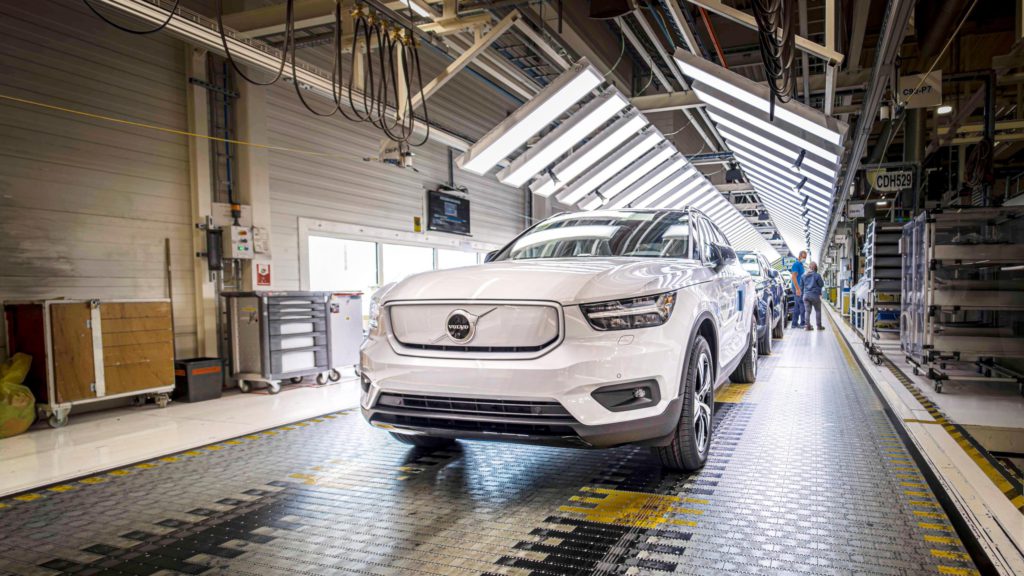Volvo prepares for EV demand by adding manufacturing capacity
08 January 2021

8 January 2021
Volvo Cars (Volvo) is to triple electrically-chargeable vehicle (EV) manufacturing capacity at its plant in Ghent, Belgium, as it prepares to meet the increased demand for its range of Recharge vehicles.
With an increased line-up of EVs, including the XC40 Recharge, the brand’s first battery-electric vehicle (BEV), interest in the technology is growing amongst consumers Thanks in part to incentive schemes and reduced mileage due to the COVID-19 pandemic, the Swedish carmaker is now looking to increase capacity at Ghent by 2022. Volvo believes that by this time, 60% of the plant’s production capacity will be EVs, more than triple what it is today.
More models
Ghent is currently preparing to take on the manufacturing of a second Volvo BEV, based on its CMA modular vehicle architecture. Volvo is committed to becoming a premium electric-car company, and in coming years, the company will launch several more BEV models. By 2025, it aims for 50% of global sales to consist of BEVs, with the rest made up of hybrids.
′Our future is electric, and customers clearly like what they see from our Recharge cars,’ said Javier Varela, head of global industrial operations and quality. ′As we continue to electrify our line-up and boost our electric production capacity, Ghent is a real trailblazer for our global manufacturing network.’
Last month, Volvo announced it will assemble electric motors at its powertrain plant in Skövde, Sweden, and plans to establish complete in-house electric-motor production by mid-decade. It will invest 700 million SEK (€67 million) to this end in the coming years. The company is also investing significantly in the in-house design and development of electric motors for the next generation of Volvo cars.
Increased sales
Volvo had a strong second half of 2020 following disruption caused by the COVID-19 pandemic, reporting the strongest H2 sales figures in its history. The carmaker lays credit for this recovery with its EV sales, as consumers turned to the technology amid the turbulance.
′The company acted decisively to mitigate the impact of the pandemic during the first half of the year, allowing it to quickly restart its operations after a brief shutdown and embark on a strong recovery, helped by fast-growing demand for its Recharge line-up of chargeable cars,’ Volvo said.
With fully-electric or plug-in hybrid powertrains, the share of Recharge models more than doubled in 2020 compared to 2019. In Europe, the share of Recharge cars of overall sales was 29%, the highest EV share of any brand in the region. It was also a leading plug-in hybrid brand in the US.
Pooling resources
Like many others, the carmaker is looking to EVs to help lower CO2 emissions and meet strict European Union targets. Volvo has been confident in meeting its targets for some time, and last year formed an emissions pool with Ford, aiming to help its former owner by lowering average emissions across an expanded fleet.
Alongside its Volvo-branded models, the carmaker’s spun-out brand Polestar also counts towards its overall CO2 fleet emissions. The BEV-only manufacturer became fully operational in 2020, rolling out its retail strategy in ten markets, and bringing its Polestar 2 model to the road.
′Despite the challenges presented by 2020, Polestar has gained real momentum,’ commented Thomas Ingenlath, Polestar CEO. ′I want to recognise the incredible effort made by the Polestar team and our partners globally to bring our brand, Red Dot’s brand of the year, to customers globally.’